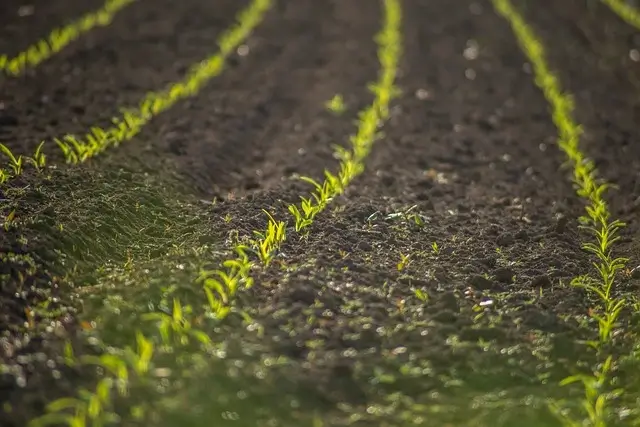Introduction Organic Pest Control
Organic farming is a farming system that operates on natural methods and resources to grow crops and raise livestock. It encourages natural farming methods and materials to use in farming aiming to preserve the environment from any kind of harmful effects. Pest and disease control is one of the important aspects of organic farming to discuss because it emphasizes the natural methods and options to control them. It aims to minimize the use of harmful or synthetic chemicals that are harmful to the environment and human health as well.
Further in this blog, we will explore various Organic Farming Techniques and methods to effectively manage pests and diseases, defining organic farming as a sustainable and healthy farming practice.
What is organic pest control?
Pest control and management through natural and eco-friendly methods is Organic pest control. In this, the use of methods is only targeted that are not harmful to the environment and used to manage pests in agriculture and gardening practices. It is a crucial part of farming that minimizes the use of synthetic pesticides and fertilizers.
This practice prioritizes a healthy system of living for humans and animals, biodiversity, and the ecosystem.
Organic farming techniques for pest control
Here are some organic techniques used in organic farming to control or manage pests and diseases:
Crop Rotation
Crop rotation is a primary method of pest management in organic farming. It refers to shifting to cultivate different crops on the same piece of land over time. This rotation in crops helps farmers cut the pest and disease cycle and diminish their growth in the soil and crops. The nutrient requirements, growing habits, and pest vulnerabilities of different crops vary due to their specifications. Thus, crop rotation in organic farming breaks the pest and disease cycle by inhibiting the growth of specific pathogens or pests that may target a particular type of crop.
Biological pest control
Utilizing pests’ natural enemies, such as viruses, parasites, and predators, is biological pest control. Farmers are using beneficial insects including ladybirds, lacewings, and parasitic wasps in order to manage pest populations. These helpful creatures feed on or parasitize pests, which significantly lowers their population. For instance, ladybirds are renowned for devouring aphids, which are a prevalent pest in many crops.
The employment of microbial agents is a different biological control strategy. Caterpillars and other insect pests are frequently managed by the naturally occurring soil bacteria Bacillus thuringiensis (Bt). It generates poisons that are innocuous to people, animals, and beneficial insects but deadly to a few types of insect pests.
Trap Crops and Companion Planting
Trap crops are sacrificial plants with a high level of insect attraction. Farmers successfully secure their precious harvests by planting trap crops next to the main crop to entice pests away from it. Putting marigolds near vegetable fields, for instance, can draw and catch nematodes that are bad for the produce.
Another method of growing plants together that has mutually advantageous traits is companion planting. Pests repels or attract to certain plant combinations by beneficial insects. For example, growing fragrant herbs like mint and basil next to crops will help ward against pests like aphids and whiteflies.
Natural Pesticides and Insecticides
Organic farming prioritizes natural insecticides and pesticides derived from microbiological sources or plant extracts over synthetic chemical substitutes. Neem oil, pyrethrin, and rotenone are a few examples. The neem tree’s oil, known as neem, is a potent pesticide with little danger to animals. It interferes with many pests’ eating and reproduction habits.
Pyrethrin is a broad-spectrum pesticide, used to control a variety of pests and generates from chrysanthemum flowers. It has little effect on helpful insects and degrades quickly in the environment. Rotenone, generates from the roots of several plants, and used to manage pests like caterpillars and aphids.
Soil Health Management
In organic farming, maintaining soil health is essential for controlling pests and diseases. Healthy soils supports strong plant development which reduces the susceptibility of crops to pests and diseases. Here are some essential techniques for managing soil health:
Composting:
Composting organic wastes like animal manure and crop residues fills the soil with nutrients, strengthens its structure, and encourages the growth of good soil microbial organisms. A habitat with an abundance of good microorganisms in healthy soil inhibits the growth of pathogenic organisms.
Mulching:
Using organic mulch, such as straw or wood chips, helps control soil temperature, prevent weed development, and save moisture. Additionally, it offers a home for helpful insects and aids in the eradication of some pests.
Cover crops:
Growing cover crops between or during major crops increases soil fertility, controls weed growth, and improves soil structure. Clover and vetch are examples of leguminous cover crops that supply nitrogen to the soil and lessen the demand for artificial fertilizers.
Conclusion
Sustainable and eco-friendly organic agricultural approaches replaces synthetic chemical methods of pest and disease management. Effective instruments for organic farming techniques include crop rotation, biological pest control, trap crops, companion planting, natural insecticides, and soil health management. Farmers may lessen their reliance on synthetic pesticides, save vital insects, maintain the quality of the soil, and produce nutritious food by using these strategies.
Organic farming has long-term advantages for both farmers and consumers, but it takes careful management and planning. We can encourage a sustainable and resilient agricultural system that provides food security and safeguards the health of our planet by embracing organic farming practices for pest and disease management.

